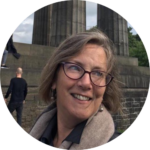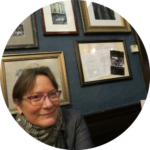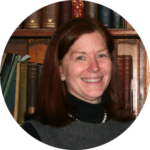Category Archives: Uncategorized
Using Art to Tell a Story about Climate Crisis
Questions? Comments? Please feel free to contact J Henry Fair (hf@jhenryfair.com)
Storytelling for Palaeoecological Collections: Preserving and Interpreting Microscopic Specimens to Understand a Changing Environment
Questions? Comments? Please feel free to contact Diana Tirlea (diana.tirlea@gov.ab.ca) or Eleanora Sermoneta (eleonora.sermoneta@gmail.com)
Sustainability 360
(More) Sustainable Choices in Collections Care
Questions? Comments? Please feel free to contact Moya Dumville (md@protectheritage.com) or Robert Waller (rw@protectheritage.com)
Sustainability in Diorama Construction
Questions? Comments? Please feel free to contact Claire Dean at claire.dean@tulliehouse.org
Expanding the Narratives of Our Climate Emergency: A Case Study with the National Park Service
Public Historian Donna Graves will share a new National Park Service project that expands how the agency communicates about the climate crisis. “History and Hope: Interpreting the Roots of Our Climate Crisis and Inspiring Action” is a toolkit designed to help interpreters and other NPS communicators use history to help people understand climate change in new ways and feel inspired to take climate action.
National parks protect some of the nation’s most precious places and objects and hold stories of who we are as a nation and what we value as a society. Rangers and other NPS staff are trusted sources of information, making national parks prime locations to help people grapple with the challenges of the climate crisis.
The purpose of “History and Hope” is to expand our interpretation of climate change. Existing interpretation generally uses scientific and technical language to focus on the physical impacts of climate change on individual national parks. Scientific data about climate change doesn’t reach everyone and misses crucial opportunities to deeply engage the public.
The toolkit supports using narratives based in the history of sites to help people see climate change in a new light — from its human-caused origins to its solutions. Centering human narratives allows visitors to see themselves and their communities within the story. This toolkit can help move people beyond individual action to the collective and systemic changes needed to build a sustainable and just future.
Graves will describe the development of the toolkit, which included consultation with a variety of national parks.
 DONNA GRAVES
DONNA GRAVES
Independent Historian, Urban Planner
Donna Graves is an independent historian and urban planner based in Berkeley, CA. She develops interdisciplinary public history projects that emphasize social justice and sense of place using preservation, exhibits, film, publications and the arts.
Graves was instrumental in establishing and developing Rosie the Riveter/WWII Home Front National Historical Park in Richmond, CA. She co-authored a citywide study of LGBTQ historic places in San Francisco and contributed a chapter to the National Park Service’s LGBTQ National Theme Study. She serves on the Board of Advisors for the National Trust for Historic Preservation.
Graves is currently co-leading a project “History and Hope: Interpreting the Roots of Our Climate Crisis,” to create a toolkit supporting National Park Service interpreters and educators expand their work to center people and historical narratives, including a strong climate justice lens. In 2022, she was a Fulbright Specialist in the UK exploring new approaches for heritage in the climate emergency.
Additional Resources
Creating a Multifaceted Model for Advancing Sustainability
Our museum’s collections reflect 125+ years of research, education, and industrial collaborations at the College of Earth and Mineral Sciences, Penn State. Over time, the college’s emphasis has evolved from mining engineering to mineral industries and sciences to the advancement of knowledge of Earth processes, natural resources, energy, environment, and sustainability. As the college focus shifted away from traditional natural science object-based research, the museum has modified its use and interpretation of its collections to remain relevant within the college. Taking a critical look at the museums’ mission and collections stewardship practices, the college’s and university’s strategic plans, and the use and interpretation of the museum’s collections in current research and teaching has been critical for developing strategies that promote the museum and its collections as institutionally relevant and sustainable. During the last decade, the museum has endeavored to incorporate sustainability into its operations, policies, and planning in an effort to ensure its diverse collections of earth materials, technologies and tools of research and teaching, and industrial art gain recognition as physical objects that embody data, knowledge, and unique pathways of engagement with science, technology, engineering, art, history, and the environment. Efforts to promote the relevance of the collections are balanced with the reality of limited budgets, limited space, limited staff positions, and increasingly non-traditional use of the collections for research and education. Successful outcomes of our approach are dependent upon not only adopting sustainable practices and policies of collections care but on the museum creating sustainable relationships with individuals and groups in and out of the college. Creating a multifaceted model that promotes mission and sustainability across museum operations and planning has facilitated the development of museum practices and policies that prioritize sustainability.
 JULIANNE SNIDER
JULIANNE SNIDER
Director, Collections Manager, Site Conservator
Julianne Snider has more than 25 years of experience working with collections as director of the Earth and Mineral Sciences Museum & Art Gallery (Penn State), as collections manager at the Illinois State Museum, as site conservator for the National Academy of Sciences of Ukraine, and as curator of the Guild of Natural Science Illustrators traveling collection. She has been associate editor of the journal of the Society for the Preservation of Natural History Collections, Collection Forum, and has presented at ARCS, SPNHC, ICOM-NatHist, SMA, and MAAM meetings. Julianne holds a B.A. in fine arts (Indiana University—Bloomington), a Graduate Certificate in Museum Collections Management (George Washington University), and a Ph.D. in Science Education (Penn State).
Preservation Best Practices and Scientific Arrangement: Environmental Monitoring in a Victorian Science Museum that Maintains the “Systematic” Scheme
The Wagner Free Institute of Science is a natural history museum and educational institution devoted to free education in science. Incorporated in 1855, its museum collections were assembled during the 19th century and encompass more than 100,000 specimens, representing all branches of the natural sciences. It also houses a research library of 45,000+ volumes, primarily of scientific texts published between the late 16th to early 20th century. The Wagner occupies its original building, erected during the Civil War and opened in 1865. The building and the interior were substantially renovated in the 1880s, including new interior finishes and furnishings, and is largely unchanged from that time. The exhibits, arranged by biologist Joseph Leidy, are still in place in their original wood and glass cabinets. In 1901-03, a one-story library wing was added that initially served as the first branch of the Free Library of Philadelphia and now houses the Wagner’s library and archives.
Today, the Wagner is a unique example of an intact 19th century museum and library. Designated a National Historic Landmark in 1990, its mission was expanded to include preserving the building, exhibits, and collections and interpreting them in the context of the history of science. Since then, the Wagner has developed a systematic approach to preservation and conservation that seeks to maintain the integrity of building and collections as an exceptionally intact and inseparable ensemble. This talk will focus on past and current initiatives that address environmental conditions and sustainability.
 SUSAN GLASSMAN
SUSAN GLASSMAN
Executive Director
Susan Glassman is the Executive Director of the Wagner Free Institute of Science in Philadelphia. She serves on the board of the Consortium for History of Science, Technology and Medicine (CHSTM) and the Advisory Board of the Penn Museum. She prepared the National Historic Landmark nominations for the Wagner Free Institute of the Science and the College of Physicians of Philadelphia.
Evolving Approaches: The Organic Materials Study Collection at the Winterthur/University of Delaware Program in Art Conservation
For decades, the organic materials study collection at the Winterthur/University of Delaware Program in Art Conservation (WUDPAC) has played a pivotal role in teaching. It has grown over time to include numerous examples of plant- and animal-based materials in their raw and worked states, along with an array of rubbers and plastics. For students, being able to examine and physically handle these materials enhances learning, often in profound ways. This talk will further explore how the study collection has impacted education and outreach, both within and beyond WUDPAC, and discuss the ways in which our approaches to using, organizing, and adding to it have evolved throughout the history of the program. It will also consider the importance of such study collections not only for teaching about material properties and traditions of use, but in fostering a greater sense of connection to the natural world and raising awareness of critical environmental issues.
 LARA KAPLAN
LARA KAPLAN
Objects Conservator
Lara Kaplan received her M.S. in Art Conservation from the Winterthur/University of Delaware Program in Art Conservation (WUDPAC) in 2003, majoring in objects conservation. Following a post-graduate fellowship at the Smithsonian National Museum of the American Indian, she operated a Baltimore-based conservation business, working with institutions and private clients throughout the region. She also worked as a conservation educator, leading courses and lecturing at universities in the Baltimore/Washington, D.C. area, and serving as affiliated faculty at WUDPAC, where she focused her teaching on organic materials.
Lara joined the staff at Winterthur Museum in 2019, caring for collection objects and continuing to teach at WUDPAC. In both roles, she emphasizes interdisciplinary collaboration and issues of diversity and inclusion. Her research interests include the technical analysis of organic materials, especially skin and leather, the identification and treatment of plastics, and conservation ethics.
